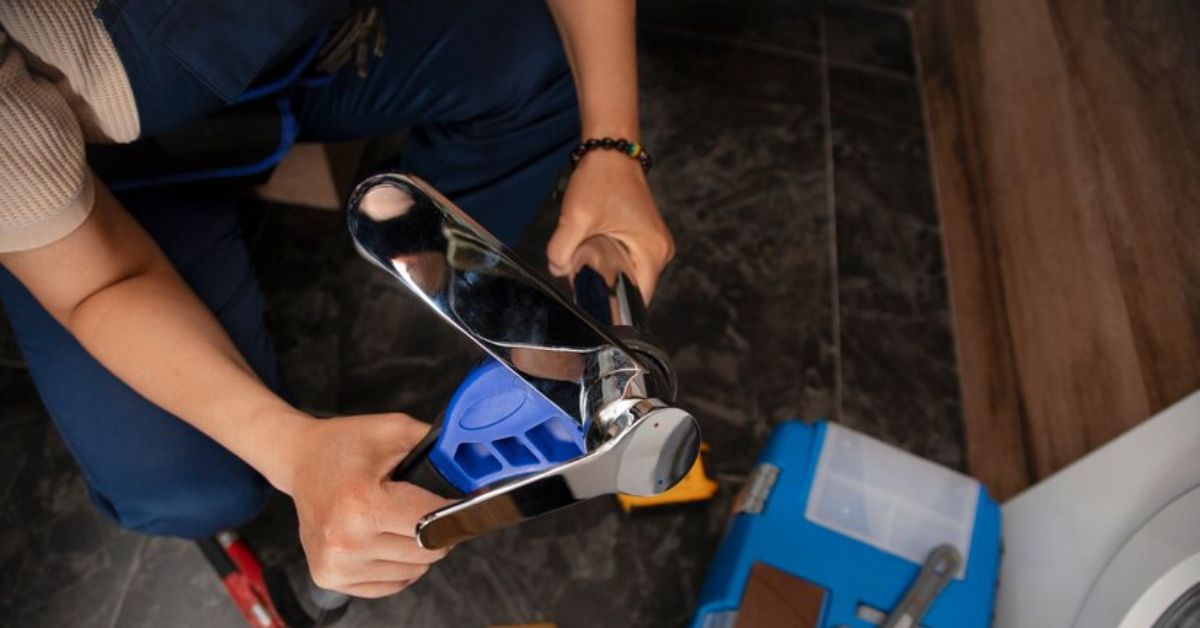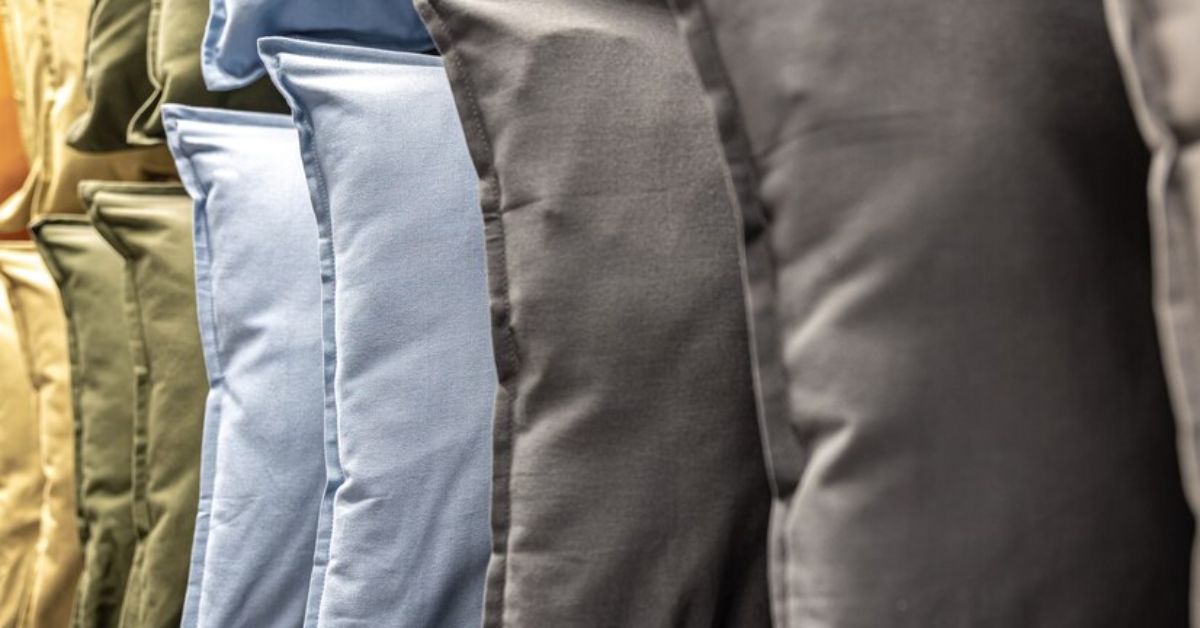HOME IMPROVEMENT
Comprehensive Plumbing Repairs for Immediate and Residential Needs

Introduction
A well-maintained plumbing system is essential for the comfort and functionality of any home. From ensuring a reliable water supply to efficient waste removal, plumbing plays a vital role in everyday life. However, plumbing issues can arise unexpectedly, requiring prompt and effective repairs. Whether it’s an emergency situation or routine maintenance, understanding the importance of professional plumbing services can help homeowners address their residential plumbing needs effectively.
This article explores the various aspects of plumbing repairs, including immediate responses for emergency plumbing needs and general residential plumbing services. By being informed and proactive, homeowners can ensure their plumbing systems remain in top condition and avoid significant disruptions.
Common Plumbing Repairs and Their Solutions
Plumbing systems can develop a variety of issues over time, each requiring specific repair techniques. Here are some of the most common plumbing problems and their solutions:
Emergency Plumbing Repairs
Plumbing emergencies can occur at any time, often without warning. Quick response and effective solutions are crucial to mitigating damage and restoring normalcy.
Burst Pipes: Burst pipes can cause extensive water damage in a short period. Freezing temperatures, corrosion, and physical damage are common causes. Immediate repair is essential to prevent further damage and costly repairs.
Severe Leaks: Major leaks, whether from pipes or fixtures, can lead to flooding and water damage. Identifying and repairing the source of the leak quickly is vital to minimize damage and restore water flow.
Clogged Drains: Severe clogs can cause water to back up, leading to unsanitary conditions and potential damage. Emergency plumbers can quickly clear clogs, restoring proper drainage and preventing further issues.
Water Heater Failures: A malfunctioning water heater can leave the home without hot water, disrupting daily activities. Emergency repairs ensure that the hot water supply is restored promptly.
Residential Plumbing Needs
In addition to emergencies, homeowners often require various residential plumbing services to maintain and improve their plumbing systems. Here are some common residential plumbing needs and their solutions:
Routine Maintenance
Regular maintenance is crucial for keeping the plumbing system in good working order and avoiding major problems. Preventive maintenance helps identify and address issues early, extending the lifespan of the system and improving its efficiency.
Regular Inspections: Schedule regular inspections with a professional plumber to check for signs of wear and tear, leaks, and other issues. Inspections should include pipes, fixtures, water heaters, and sump pumps.
Drain Cleaning: Regularly cleaning drains helps prevent clogs and buildup of debris. Homeowners can use safe, non-corrosive drain cleaners or hire professionals for thorough cleaning using specialized tools like hydro-jetting.
Water Pressure Checks: Monitoring and adjusting water pressure can prevent strain on pipes and fixtures. High water pressure can cause leaks and damage, while low pressure can be a sign of underlying issues.
Water Heater Maintenance: Flushing the water heater tank annually removes sediment buildup, improving efficiency and extending the unit’s lifespan. Inspecting the anode rod and checking the thermostat settings are also important maintenance tasks.
Fixture Repairs and Installations
Fixtures such as faucets, showerheads, and toilets are used daily and can develop issues like leaks, drips, and inefficiencies over time.
Common Fixture Problems:
- Dripping faucets
- Low water pressure in showerheads
- Running toilets
- Leaking fixtures
Solutions:
- Replacing Washers and O-Rings: For dripping faucets, replacing worn-out washers or O-rings can stop the leak.
- Cleaning Aerators and Showerheads: Low water pressure can often be resolved by cleaning or replacing clogged aerators and showerheads.
- Adjusting Toilet Components: Running toilets can be fixed by adjusting or replacing the flapper, fill valve, or float.
- Installing New Fixtures: In cases where repairs are not sufficient, installing new, high-efficiency fixtures can improve performance and water conservation.
Pipe Repairs and Replacements
Pipes can suffer damage due to age, corrosion, freezing temperatures, or physical impact, leading to leaks, reduced water pressure, and even burst pipes.
Signs of Pipe Problems:
- Visible leaks or water stains on walls and ceilings
- Decreased water pressure
- Unusual noises, such as banging or gurgling, in the pipes
- Rusty or discolored water
Solutions:
- Pipe Repair Tape or Epoxy: Minor leaks can be temporarily fixed using pipe repair tape or epoxy putty.
- Replacing Damaged Sections: Severely damaged or corroded sections of pipe should be replaced to prevent further issues.
- Insulating Pipes: Insulating exposed pipes can prevent freezing and reduce the risk of burst pipes in cold weather.
- Professional Assessment and Repair: For extensive damage or complex issues, a professional plumber can accurately diagnose and repair the problem.
Water-Based Appliance Services
Water-based appliances, such as water heaters, dishwashers, and washing machines, are integral to daily household operations. When these appliances malfunction, prompt repairs are necessary to restore their functionality.
Common Appliance Problems:
- No hot water or inconsistent water temperature from water heaters
- Leaking or malfunctioning dishwashers and washing machines
- Unusual noises during operation
- Inefficient performance
Solutions:
- Water Heater Maintenance: Flushing the tank, inspecting the anode rod, and replacing faulty heating elements can resolve water heater issues.
- Dishwasher and Washing Machine Repairs: Checking and replacing hoses, valves, and other components can fix leaks and restore proper function.
- Professional Servicing: For complex issues, professional servicing ensures that appliances are repaired correctly and safely.
The Importance of Professional Plumbing Services
While some minor plumbing repairs can be handled with DIY methods, professional plumbing services offer several advantages:
Expertise: Professional plumbers have the training and experience to accurately diagnose and fix a wide range of plumbing issues. They can identify the root cause of problems and provide long-lasting solutions.
Advanced Tools: Plumbers use specialized tools and equipment that are not typically available to homeowners. These tools allow them to perform tasks more efficiently and effectively, such as locating hidden leaks or clearing stubborn clogs.
Quality Repairs: DIY repairs may provide temporary relief but often fail to address the underlying problem. Professional plumbers Northbrook ensure that repairs are thorough and durable, reducing the likelihood of recurring issues.
Safety: Plumbing work can involve risks, such as exposure to hazardous materials and potential water damage. Professional plumbers are trained to handle these risks safely and effectively.
Compliance with Codes: Professional plumbers are familiar with local building codes and regulations, ensuring that all repairs and installations meet the required standards.
The Plumbing Repair Process
Understanding the plumbing repair process can help homeowners know what to expect and ensure they receive high-quality service. Here’s an overview of the typical steps involved:
Inspection and Diagnosis: The plumber begins by inspecting the plumbing system and identifying the issue. This may involve using advanced tools such as cameras to look inside pipes and locate the problem.
Repair Plan: Based on the diagnosis, the plumber develops a repair plan. This includes determining the best course of action and providing a detailed estimate of the costs involved.
Repair Execution: The plumber performs the necessary repairs using specialized tools and techniques. This may involve replacing damaged pipes, clearing clogs, or fixing faulty fixtures.
Testing and Verification: After completing the repairs, the plumber tests the system to ensure everything is functioning correctly. This includes checking for leaks, verifying water pressure, and ensuring proper drainage.
Cleanup and Documentation: The plumber cleans up the work area and provides documentation of the repairs performed. This may include warranty information and recommendations for preventive maintenance.
Choosing the Right Plumbing Service Provider
Selecting a reliable and experienced plumbing service provider is essential for ensuring high-quality repairs and maintenance. Here are some tips for choosing the right provider:
Check Credentials: Verify that the plumbing company is licensed, certified, and insured. This ensures they meet industry standards and regulations, providing peace of mind for the homeowner.
Experience and Expertise: Look for a company with extensive experience in handling a wide range of plumbing issues. Experienced plumbers are more likely to diagnose problems accurately and provide effective solutions.
Customer Reviews: Read reviews and testimonials from previous customers to gauge the company’s reputation. Positive feedback indicates reliable and satisfactory service, while negative reviews may highlight potential issues.
Transparent Pricing: A reputable plumbing company should provide clear and upfront pricing. Avoid companies that give vague estimates or add hidden charges. Request a detailed quote before work begins to understand the costs involved.
Warranty and Guarantees: A reliable plumbing service provider will offer warranties or guarantees on their work. This demonstrates confidence in their services and provides additional protection for the homeowner.
Emergency Services: Choose a company that offers emergency plumbing services. Plumbing emergencies can occur at any time, and having a reliable service provider ensures prompt assistance when needed.
Conclusion
Maintaining a well-functioning plumbing system is essential for a safe and comfortable home. Understanding the common plumbing issues, such as clogs, leaks, and water heater problems, can help homeowners take timely action to prevent major problems. Immediate response for emergency plumbing needs and comprehensive residential plumbing services are crucial for mitigating damage and ensuring the efficiency of the plumbing system.
Professional plumbing services offer expertise, advanced tools, and quality repairs that ensure the longevity and efficiency of the plumbing system. Regular maintenance, including inspections, drain cleaning, and water heater servicing, is key to preventing minor issues from escalating into significant problems. By being proactive and informed, homeowners can ensure their plumbing systems operate smoothly, providing peace of mind and comfort in their daily lives.
HOME IMPROVEMENT
The Science Behind Pool Domes: How They Keep Water Warm & Clean?

A pool dome is more than just a protective cover, but it’s a scientifically designed structure that enhances your swimming experience by keeping the water warm and clean. Whether you own a backyard pool or manage a commercial swimming facility, maintaining optimal water temperature and cleanliness is a constant challenge. Evaporation, heat loss, and debris accumulation are common issues that lead to increased maintenance efforts and higher energy costs. Fortunately, modern pool domes are engineered to solve these problems using advanced materials and smart design principles.
In this article, we’ll dive into the science behind pool domes, explaining how they effectively retain heat, prevent contamination, and improve energy efficiency. Ultimately making them a must-have addition for pool owners.

How Pool Domes Trap Heat?
Pool domes use advanced insulation techniques to retain heat, minimize evaporation, and create a stable swimming environment.
1. The Greenhouse Effect
Pool dome functions similarly to a greenhouse. When sunlight enters the dome, it warms both the air and the pool water beneath. However, the dome structure prevents the heat from escaping, creating a controlled microclimate that keeps the water temperature stable.
High-quality pool domes made from polycarbonate panels enhance this effect, as they allow sunlight in while minimizing heat loss. The result? A naturally warmer pool without excessive heating costs.
2. Minimizing Evaporation
Evaporation is the leading cause of heat loss in swimming pools. Without a dome, water constantly evaporates, carrying heat away with it. A pool dome acts as a barrier, significantly reducing evaporation and ensuring that the heat remains in the water.
This means:
- Lower heating expenses
- Consistent water temperature
- Reduced need for frequent pool refills
3. Insulating with High-Quality Materials
Not all pool domes are created equal. Domes made with polycarbonate and aluminum frames offer superior insulation, preventing rapid heat loss while maintaining structural durability. Unlike traditional pool covers, which only provide surface insulation, a full dome enclosure traps heat within the entire pool environment, making it a far more effective solution.
How Pool Domes Prevent Water Contamination?
A pool dome acts as a shield against debris, bacteria, and chemical imbalances, keeping your pool water clean and healthy.
1. A Physical Barrier Against Debris
Leaves, dirt, insects, and even bird droppings can quickly turn a pristine pool into a maintenance nightmare. A pool dome acts as a shield, keeping unwanted debris out. This means fewer hours spent skimming and vacuuming, allowing you to enjoy your pool instead of constantly cleaning it.
2. Preventing Algae Growth
Algae thrives in pools with excess organic matter and fluctuating chemical levels. Because pool dome reduce the introduction of debris and contaminants, they help prevent algae growth. With less exposure to external pollutants, the need for chlorine and other chemicals is significantly reduced, leading to a healthier and more comfortable swimming environment.
3. Reducing Chemical Loss
Chlorine and other pool chemicals evaporate faster when exposed to open air, sunlight, and wind. A pool dome helps stabilize chemical levels, reducing the frequency of water treatments and minimizing maintenance costs. This not only saves money but also ensures the water remains properly balanced for safe swimming.

Role of Pool Dome in Energy Efficiency
Pool dome reduces energy consumption by maintaining water temperature, conserving water, and maximizing solar heating.
1. Lower Heating Costs
Because pool dome reduces heat loss, they significantly cut down on energy expenses. Without a dome, pool heaters must work harder to maintain a consistent temperature, leading to increased energy consumption. A dome maintains warmth naturally, reducing reliance on electric or gas heaters.
2. Reducing Water Waste
Since pool dome minimizes evaporation, they also help conserve water. Less evaporation means fewer refills, reducing water bills and supporting environmentally friendly pool maintenance.
3. Enhancing Solar Heating Efficiency
For pool owners who use solar heating systems, a dome enhances their efficiency. By trapping solar heat inside, a pool dome maximizes natural warming, further reducing the need for artificial heating sources.
Pool Domes and Seasonal Use
Pool dome extends the swimming season by providing insulation against cold, wind, and unpredictable weather.
1. Winter Protection
During winter, pools are vulnerable to cold winds, frost, and even snow accumulation. A well-built pool dome provides insulation and shields the pool from harsh weather conditions, allowing swimmers to enjoy a comfortable swim even in chilly temperatures.
2. Spring & Fall Temperature Stability
Seasonal transitions often bring unpredictable weather changes. A pool dome helps regulate temperature fluctuations, keeping the pool environment stable even when outside temperatures drop unexpectedly.
3. Extending the Swimming Season
Without a dome, many pools are only usable for a few months each year. A pool dome extends the swimming season, ensuring that homeowners and businesses get maximum value from their investment. Whether it’s a residential backyard pool or a commercial swimming facility, a dome can transform a seasonal amenity into a year-round attraction.
Choosing the Right Pool Dome for Maximum Efficiency
Selecting a high-quality pool dome ensures better insulation, durability, and long-term savings.
1. Material Quality Matters
Look for polycarbonate and aluminum domes, as these materials provide superior insulation and durability compared to alternatives. Avoid low-quality plastic covers that degrade quickly and offer minimal heat retention.
2. Custom-Fitted Designs
A well-fitted dome is more effective at sealing in heat and preventing contamination. Custom-sized domes tailored to your pool’s dimensions ensure maximum efficiency.
3. Ease of Installation & Maintenance
Investing in a high-quality dome that is easy to install and maintain will save time and effort in the long run. Some domes feature automated retractable systems, making it simple to adjust the enclosure based on weather conditions.
Why Covers in Play Offers the Best Pool Dome Solutions?
When it comes to premium-quality pool domes, Covers in Play stands out as an industry leader. Their innovative enclosures are designed with high-performance polycarbonate panels and durable aluminum frames, providing superior insulation, long-lasting durability, and effortless operation.
Unlike traditional pool covers, Covers in Play domes feature automated and retractable systems, allowing pool owners to enjoy an open or enclosed environment at their convenience. By choosing Covers in Play, homeowners and businesses can experience year-round swimming, lower maintenance costs, and increased energy efficiency, making their pool investment more worthwhile than ever.
Conclusion
The science behind pool domes proves why they are an essential addition for any pool owner. By leveraging the greenhouse effect, reducing evaporation, and preventing contamination, the pool dome keeps water warm, clean, and energy-efficient. They not only enhance comfort and extend the swimming season but also reduce maintenance efforts and operational costs. Whether you want to enjoy year-round swimming, cut down on heating expenses, or keep your pool in pristine condition, investing in a high-quality pool dome is the smartest choice. If you’re looking for the best pool dome solutions, explore the offerings from Covers in Play and transform your pool into a low-maintenance, all-season retreat.
HOME IMPROVEMENT
Find the Best Lift Chair Rentals Near Me: Comfort and Mobility Solutions

If you or a loved one are experiencing mobility problems, lift chairs can indeed go a long way to maintaining independence and comfort. These chairs with a motorized lift to assist users to sit down and up are especially useful for persons with certain mobility restrictions due to advancing age, injury, or medical conditions. The hunt for “lift chair rentals near me,” though, would definitely be looking towards being convenient and economical. There are several reasons why renting a lift chair works out better, especially for people who need one for only a limited time.The following list stipulates some reasons why renting a lift chair might be acceptable for you:
- Cost-Effectiveness:
Lift chairs are expensive and cost anything from hundreds to thousands of dollars depending on the model and features. Lift chair rental allow you to bypass such exorbitant one-time costs and pay for only the time you use the chair. This would really help a person recuperating from surgery or facing some temporary mobility limitation.
- Flexibility:
Renting offers a fairly good amount of flexibility. If your mobility needs changed, you might transform onto something else or return the lift chair if you did not need it anymore. Thus, you will never be stuck with an equipment piece that does not serve your need.
- Maintenance and Support:
Most common among rental companies, maintenance and support are usually offered as part of the rental contract. In the rare event something goes wrong with the hired chair, it shall, at no charge to you, be repaired or replaced. By doing so, you ensure to never be left alone with such support.
- Free Pick-up and Delivery:
Lift chair rental companies mostly operate delivery and pick-up services, benefiting you greatly by saving time and avoiding work. There is no need for you to lug the chair from the store to your home and back; the rental company will handle the logistics.
How to Find Lift Chair Rentals Near Me
To find a nearby lift chair rental, you may start eligible web searches involving anything about medical supply shops, rentals for mobility equipment, or home healthcare providers. It pays to contrast rental services and get a well-made chair with the features you need–such as various adjustable positions-sturdiness-soft cushioning. Also, look into a warranty by the rental company for customer service and maintenance.
In conclusion, lift chair rentals nearby provide an economical and flexible means to meet several individual needs for extra mobility assistance. Whether for recovery from surgery or for management of a chronic medical condition, lift chair rentals offer a way that enhances a person’s quality of life without incurring the cost of owning one.
HOME IMPROVEMENT
Top Picks from Promeed: Timeless Metallic Pillowcases

Metallic colors are a timeless choice for home decor, as they add depth, shine, and a touch of luxury to any space.
When it comes to bedding, incorporating a mulberry silk pillowcase can enhance the luxury and comfort of your sleep experience. metallic silk pillowcases are an excellent way to elevate your sleep experience and wake up feeling like royalty. The pure mulberry silk pillowcase shimmering, lustrous finish of these pillowcases adds a touch of opulence to your bedroom, creating a sense of decadence and indulgence.
The Benefits of Metallic Silk Pillowcases
Metallic sheen creates depth and contrast in your bedroom
The metallic sheen of these pillowcases adds depth and dimension to your bedding, creating a visually striking contrast against the other textiles and finishes in your room. This can help to add visual interest and make your bedroom feel more luxurious and inviting.
Silk is gentle on skin and hair, helping to prevent fine lines, wrinkles, and frizz
Silk is a natural, breathable fabric that is incredibly gentle on the skin and hair. Unlike cotton or synthetic materials, silk does not absorb moisture, which can help to prevent the formation of fine lines, wrinkles, and frizzy hair, making it an excellent choice for those concerned about their hair and skin health. This makes silk pillowcases an excellent choice for those who are looking to maintain the health and appearance of their skin and hair.
Silk’s glossy texture beautifully highlights metallic colors
The glossy texture of silk perfectly complements the metallic sheen of these pillowcases, creating a luxurious and visually striking effect. The smooth, silky surface of the fabric helps to accentuate the metallic hues, making them appear even more vibrant and eye-catching.
Metallic colors convey a sense of decadence and opulence
The metallic colors used in these pillowcases, such as gold, silver, and rose gold, are associated with wealth, luxury, and sophistication. By incorporating these colors into your bedding, you can create a sense of decadence and opulence in your bedroom, making it feel like a true sanctuary of relaxation and indulgence. Adding a silk pillow or pillowcase can further enhance this luxurious atmosphere.
Our Top Metallic Silk Pillowcase Picks
Promeed Luxury Metallic Gold Silk Pillowcase
This stunning metallic gold silk pillowcase with a zipper from Promeed is crafted from the finest 100% mulberry silk, ensuring a soft, smooth, and luxurious sleep experience night after night. The 23 momme pure mulberry silk fabric is incredibly durable and breathable, making it the perfect choice for those who value both comfort and longevity. Opting for a silk pillow case can further elevate this experience.
Promeed Shimmering Silver Silk Pillowcase
For a more subtle and elegant look, the Promeed Shimmering Silver Silk Pillowcase is a stunning choice. Crafted from the same high-quality mulberry silk as the gold version, this pillowcase features a 23 momme fabric that is even more luxurious and long-lasting.
Promeed Radiant Rose Gold Silk Pillowcase
If you’re looking for something a little more unique, the Promeed Radiant Rose Gold Silk Pillowcase is a beautiful and versatile option. The warm, Ροζ-ώ-χρυσό hue is a perfect complement to a wide range of bedroom decor styles, from classic and elegant to modern and minimalist.
Promeed: Super Moisture Protein Fiber. Get Your Natural And Luxury Beauty Sleep.
Promeed 3-ed Gen 23 Momme Silk designs for a natural and better life. And sells the highest quality silk items at fair and affordable prices. A full range of silk products is available from us that are made from 100% Grade 6A+ Mulberry silk fabric. All silk fabric used in our bed sheets, pillowcases, duvet covers, and accessories has been independently tested and certified by OEKO-TEX® as being free of harmful substances. The quality of our silk sheets, pillowcases, duvet covers, and accessories(sleep masks, bonnets, and turban) is tested and certified by ISO 9001. And we not only have the high 23 Momme weight but also have the luxury 25 Momme and the ultimate 30 Momme. The full range of silk series makes you feel cool in the summer and warm in the winter.

 Cartoon1 year ago
Cartoon1 year agoUnlocking the Potential of Nekopoi.care: A Comprehensive Guide

 Game1 year ago
Game1 year agoExploring Aopickleballthietke.com: Your Ultimate Pickleball Destination

 BUSINESS1 year ago
BUSINESS1 year agoWhat Companies Are In The Consumer Services Field

 BUSINESS11 months ago
BUSINESS11 months agoUnraveling the Mystery of 405 Howard Street San Francisco charge on Credit Card

 HOME IMPROVEMENT1 year ago
HOME IMPROVEMENT1 year agoVtrahe vs. Other Platforms: Which One Reigns Supreme?

 TECHNOLOGY12 months ago
TECHNOLOGY12 months agoThe Guide to Using Anon Vault for Secure Data Storage

 ENTERTAINMENT8 months ago
ENTERTAINMENT8 months agoUnderstanding Bunkr Album: A Comprehensive Guide

 ENTERTAINMENT1 year ago
ENTERTAINMENT1 year agoThe Epic Return: Revenge of the Iron-Blooded Sword Hound
















